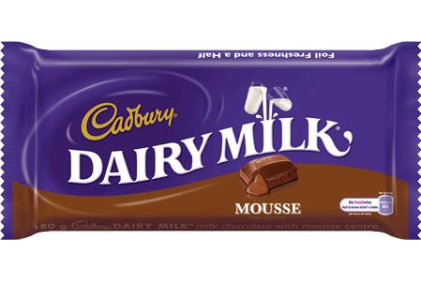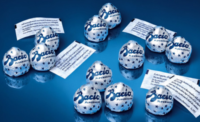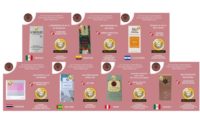
|
Cadbury has successfully trademarked “purple” for its chocolates in the UK, or at least Patone 2685C.
The chocolate maker has won a UK court battle against Nestlé to trademark its signature color — which it has used on the Cadbury’s Dairy Milk bar since 1914.
In a statement Mondelēz Intl. — Kraft’s recently formed snacking segment, which owns Cadbury — says the ruling protects its famous purple hue.
“Our Colour Purple has been linked with Cadbury for a century and the British public have grown up understanding its link with our chocolate," the company says.
Although Nestlé, which is still undecided about whether it will appeal, did not comment on specific products. However, its Wonka chocolate bars feature purple packaging that’s very similar to the shade Cadbury seems to use.
Nestlé saw the ruling a a partial victory though because it narrowed down which specific products the color was trademarked for — limiting it to mostly milk chocolate candy bars and tablets.
Specifically, the ruling said the color was trademarked for “milk chocolate in bar and tablet form; milk chocolate for eating; drinking chocolate; and preparations for making drinking chocolate.”
Originally, Cadbury wanted to trademark the color for a much broader list, including: “Chocolate in bar and tablet form; chocolate confectionery, chocolate assortments, cocoa-based beverages, preparations for cocoa-based beverages, chocolate-based beverages, preparations for chocolate-based beverages, chocolate cakes.”
However, in the judgement, the court ruled that “chocolate assortments” could not be included because Cadbury’s best selling assortment, Roses, is primarily light blue. And its claim that it has long sold its Milk Tray in purple box was not supported by evidence, while its other purple assortment, Cadbury’s Heroes, was too new to claim long standing association.
The ruling cited a similar thought process for why “chocolate cakes” could not be included, saying that Cadbury had not used the mark long enough.
Nestlé’s main argument in the case though appeared to be that a color should be allowed to be trademarked, because it’s not a graphic image.
However, the court cited past rulings as justification for its decision, including a case by Libertel GroepBV, which successfully trademarked its orange color for telecommunications goods and services.







